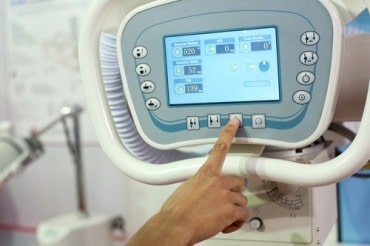
By addressing gaps in cold chain visibility, pharmaceutical companies gain more control of their supply chain and can mitigate issues before they cause significant loss.
Today’s supply chains are under increased pressure to improve efficiencies in light of the COVID-19 vaccine rollout, as nearly 379 million doses have been distributed and 319 million doses have been administered as of today, according to CDC data — leaving many to wonder, what’s happening to the roughly 60 million vaccines that have not yet been administered? This issue raises valid concerns regarding the safety and quality of the vaccine doses, as 20% of temperature-sensitive products are damaged during transport due to cold chain breaks, and 30% of scrapped pharmaceuticals are attributed to logistics issues alone.
To address these critical concerns, pharmaceutical companies should consider implementing continuous, end-to-end visibility into their supply chain at the product level, providing a real-time window into the location, dwell times, condition, and status of cold chain products such as vaccines. By implementing processes and technology such as IoT, AI/ML, digital twin, and cloud computing, pharmaceutical companies can harmonize real-time visibility at the unit level (i.e., product, temperature, location, etc. of each vial)as well as configure alerts and notifications to boost cold chain visibility.
The cold facts about vaccines
The vaccine cold chain has one overarching purpose, and that is to ensure the quality of product across multi-party supply chains from source, make and deliver — and all the transportation steps in between. To remain viable, it’s vital that COVID-19 vaccines such as Pfizer and Moderna stay within their recommended temperature ranges at all times. One piece of good news: the U.S. Food and Drug Administration recently announced that it is allowing undiluted frozen vials of the Pfizer-BioNTech COVID-19 vaccine to be transported and stored at conventional temperatures commonly found in pharmaceutical freezers for a period of up to two weeks. The Moderna vaccine, however, needs to be kept between -58° and 5° Fahrenheit during the frozen transport phase. Clearly, this can be a challenge as these vaccines rely on a complicated supply chain of freezers and temperature-controlled shipping methods; a rise or fall in temperature or humidity at any point in the cold chain will render these vaccines ineffective if they stray outside the recommended temperature ranges.
Temperature excursions are costly
Shockingly, the biopharma industry loses $35 billion each year because of failures in temperature-controlled logistics, according to the IQVIA Institute for Human Data Science.
The World Health Organization categorizes these failures as follows:
- 20% of temperature-sensitive products are damaged during transport due to broken cold chains
- The average costs of root cause analysis for each excursion can range from $3,000 to $10,000
- 5% of pharmaceutical sales are marked as scrap
- 30% of scrapped pharmaceuticals attributed to logistics issues alone
- 25% of vaccines reach their final destination degraded due to incorrect shipping
- The average pharmaceutical organization spends only 6% of its revenue on logistics
Requirements for a successful cold chain
Vaccines require careful temperature control from creation to administration to remain effective. A vaccine’s cold chain begins with the cold storage unit at the manufacturing plant and ends at vaccine administration; every single step of handling and storage must be carefully temperature controlled.
One of the challenges with transporting COVID-19 vaccines is that temperatures may fluctuate inside a trailer, spoiling the vaccines. Just this year, more than 16,000 doses of Moderna COVID-19 vaccines were spoiled in Maine and Michigan because the vials had spoiled due to improper temperatures at some point along the journey, according to The Washington Post. Another avenue where temperature excursions can occur is when pharma products are loaded/unloaded onto transport.
Ensuring an effective distribution process for cold chain products such as the COVID-19 vaccine requires:
- Seamless cold chain transit
- Proper product storage and packaging insulation to avoid temperature excursions
- The ability to deal with unexpected delays, such as severe weather
- Accurate shipping
- Strict adherence to compliance regulations
- Detailed documentation so that drivers, shippers, and logistics companies can collaborate
- Reliable storage solutions at the point of care
A lack of visibility into the cold chain and temperature excursions are the two biggest challenges that need to be addressed in order for supply chains to be successful. These gaps in supply chain visibility are typically caused by a lack of live monitoring through a manufacturing facility, a lack of tracking as product flows inside a distribution center, or passive or no product condition tracking at the pallet level as products move and are in transit. The lack of visibility into an organization’s supply chain can lead to severe ramifications such as inaccurate predictions, poor planning, delayed decision making, higher risks, and loss of business.
End-to-end visibility is key
The solution to these cold chain problems lies in giving cold chain companies real-time data access to their goods, both in the warehouse and in transit; having real-time visibility into vaccine and drug shipments is critical in mitigating loss. According to an IBM global C-suite study, 84% of chief supply chain officers stated that lack of visibility across the supply chain was the biggest challenge they face.
This is especially true for cold chain companies. Since temperature, humidity, light, and vibration excursions can happen anywhere along the supply chain, pharma companies would greatly benefit from end-to-end visibility. Higher visibility leads to better decision-making that makes operations more efficient, resulting in higher profitability. With end-to-end visibility, companies can capture product-level data, not just information about the truck or container the product is on, which is an incomplete picture.
Sensors can potentially be placed on every asset within a supply chain, creating visibility and providing insights that can significantly reduce temperature excursions and other inefficiencies. Having visibility into factors around the condition, timing, and location of your cold chain products help create a real-time view into what’s happening at every point along the supply chain. According to Maria Nieradka, an executive who has more than 30 years of supply chain experience in customer service, distribution, logistics, planning, and manufacturing in the healthcare industry, “Life sciences companies would greatly benefit from end-to-end visibility in their supply chain, from the initial supplier all the way to the end patient.”
By addressing gaps in cold chain visibility, pharmaceutical companies gain more control of their supply chain and can mitigate issues before they cause significant loss. The transformational shift from reactive problem solving to anticipating and preventing cold chain issues will drive value across an organization’s entire supply chain.
The world is changing rapidly, so it is extremely important to understand the latest sensor-enabled cold chain technologies and the value that they bring to your business. Supply chain visibility is more important than ever to ensure the safe delivery of vaccines and other life-saving products to patients.




























